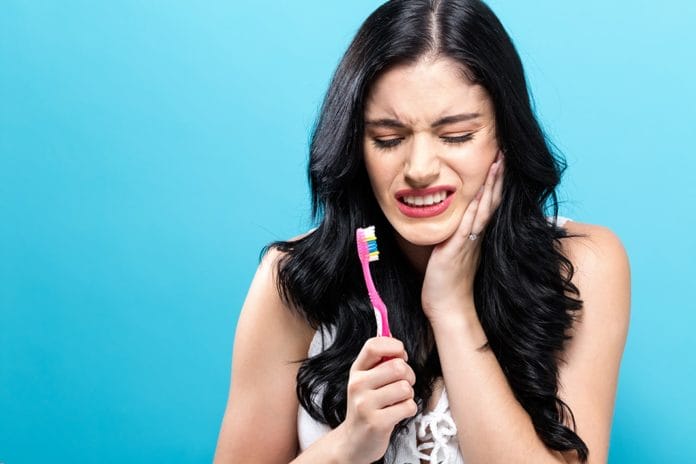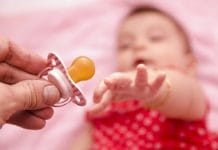For most of us, brushing our teeth is something we do daily, at least twice. It helps freshen our breath and to brighten our smile, but most importantly, we do it to keep our mouths healthy which unknowingly to most, affects our overall health. Society has been brushing their teeth for thousands of years now. The brush has evolved from frayed sticks to the new modernized electronic versions with timers and Bluetooth technology. I am sure most of you that routinely visit your dental hygienist have been told repeatedly to change your brush (or electric brush head) every three months. And I am certain many of you have questioned that simple suggestion. I can assure you it is not a tactic to help dental product companies pad their pockets, nor do we get any compensation for recommending. There exists a very logical and imperative reason behind this proposition.
Toothbrush Meets Bathroom
First, let’s think about where you store that pivotal piece of equipment – the bathroom. This vital yet germ-infested room is where we cleanse our bodies, hands, and our mouths. But what else happens at a higher frequency in the bathroom? YES! The act of “using the bathroom” or relieving oneself. If you have multiple people in your family or drink coffee like it’s life support, then the flusher gets an amazing daily workout. Unfortunately, many do not close the lid prior to flushing, expelling bacteria into the bathroom.
Philip Tierno, a microbiologist at New York University, says that aerosol plumes can reach as high as 15 feet.[1] Most bathrooms are designed with the toilet and sink in close proximity making this a very probable reality. The average toothbrush can contain 10 million bacteria or more according to a study done by the University of Manchester in England.[2] One study found that 54.85% of toothbrushes tested were contaminated with fecal matter, and with an 80% chance that the fecal coliforms came from another person using the same bathroom. [3]
Toothbrush Accessories
Even if you do religiously close the lid prior to brushing, your bathroom is still a very germ-infested room. Many people purchase those fancy little toothbrush holders to match their bathroom décor and proudly display them on the bathroom counter. When handwashing takes place anything you are washing off will splash back and contaminate your holder, and the brush resting in it. Unfortunately, toothbrush holders are the second most-germy household items according to a study done by the National Sanitation Foundation.[4] Bacteria present on toothbrush holders included Staphylococcus Aureus (Staph), E. Coli and Salmonella (Coliform), mold, and yeast spores. Still want to store your toothbrush in that pretty little decoration on your bathroom countertop?
Toothbrush Covers
For many people, the resolution to keeping their brush “protected” is by placing a plastic toothbrush head cover on the brush. While the concept seems like a good idea, it is, in fact, one that promotes bacterial growth. Placing a cover on a toothbrush allows for the bristles to remain moist between uses which creates an environment that bacteria like to grow in. Therefore, it is best to refrain from storing brushes in cases or covers until they have completely dried out.
Toothbrush Wear
The ADA recommends that toothbrushes be replaced every three to four months, or more often if the bristles are visibly frayed.[5] While replacing not only gets rids of germs, it helps with the effectiveness of the brush. Toothbrush bristles wear quickly, especially if used as recommended, creating a smoother polished bristle, which decreases the effectiveness of plaque removal. Studies confirm that a worn toothbrush is less efficient with respect to plaque removal than a new brush.[6] Here lies yet another reason to replace your brush!
Conclusion
Our mouths are natural habitats for bacteria. There are approximately 100-200 species of bacteria living in our mouth, and in an unbrushed mouth, as many germs as a dirty bathroom floor.2 Therefore, it is only inevitable that our toothbrushes will be germ-ridden as well. The average toothbrush contains as many as 10 million bacteria or more.2 However, many of these bacteria are not of concern as they are part of our body’s natural flora. It is the bacteria that comes from illnesses and others that pose a threat to our bodies. Changing your toothbrush routinely as suggested by your dental professional is not as bogus as it sounds now that you have the supporting facts. By spending a few dollars to replace your toothbrush you are not only ensuring that your body is staying healthier but also optimizing plaque removal.
Before you leave, please consider checking out the Today’s RDH self-study CE courses. All courses are peer-reviewed and non-sponsored to focus solely on high-quality education. Click here now.
Listen to the Today’s RDH Dental Hygiene Podcast Below:
References
1. Kane, Sean. “Here’s Why You Should Always Close the Toilet Lid When You Flush.” Business Insider. 24 Mar. 2016. Retrieved from www.businessinsider.com/flushing-toilet-seat-up-sprays-water-germs-2016-3
2. Shah, Yagana. “The Disgusting Truth About Your Toothbrush.” The Huffington Post. 21 Apr. 2014. Retrieved from www.huffingtonpost.com/2014/04/21/toothbrush-germs-_n_5127448.html
3. American Society for Microbiology. “Toothbrush contamination in communal bathrooms.” ScienceDaily. 2 June 2015. Retrieved from www.sciencedaily.com/releases/2015/06/150602130650.htm
4. “2011 NFS International Household Germ Study.” NFS International, the Public Health and Safety Organization. 1 July 2013. Retrieved from http://www.nsf.org/newsroom_pdf/2011_NSF_Household_Germ_Study_exec-summary.pdf
5. “Oral Health Topics -Toothbrushes.” Electronic Health Records. Center for Scientific Information, ADA Science Institute. 18 Sept. 2017. Retrieved from www.ada.org/en/member-center/oral-health-topics/toothbrushes
6. Conforti, N J, et al. “An Investigation into the Effect of Three Months’ Clinical Wear on Toothbrush Efficacy: Results from Two Independent Studies.” Current Neurology and Neuroscience Reports. U.S. National Library of Medicine. Retrieved from www.ncbi.nlm.nih.gov/pubmed/12723100











